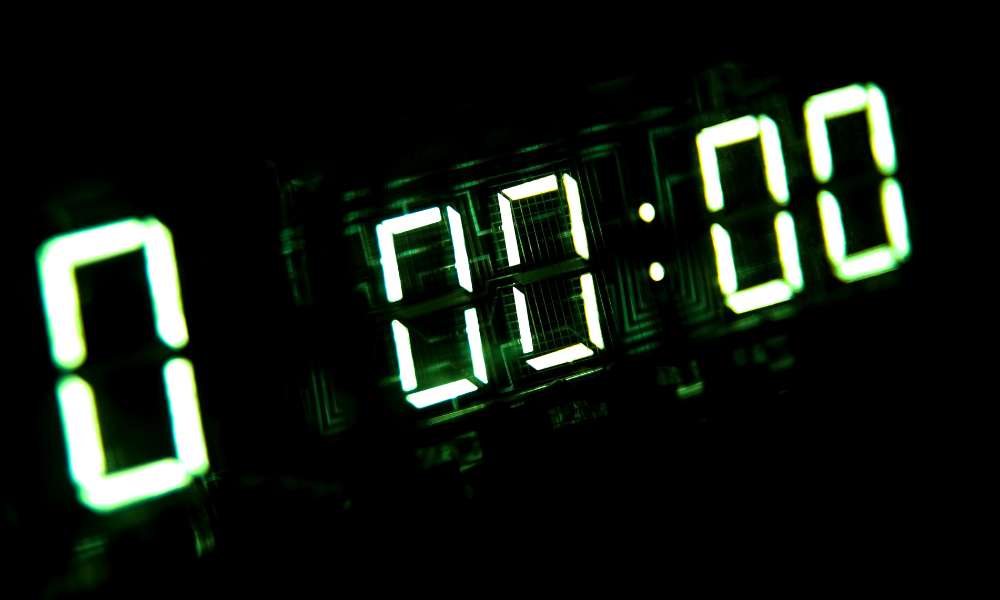In today’s fast-paced digital world, knowing how to reset a digital clock can save you time and frustration. Whether it’s a power outage or simply daylight saving time, understanding this simple task ensures your schedule remains accurate and punctual. This comprehensive guide on “How to Reset Digital Clock. provides clear, step-by-step instructions suitable for any digital clock model. From basic settings to advanced features, we cover everything you need to ensure your clock is always precise. Follow our expert tips to avoid common mistakes and make resetting your digital clock a breeze. Keep reading to master this essential skill and stay on time effortlessly.
Understanding the Reset Process

Resetting a digital clock is a crucial process that involves returning the device to its factory settings, often necessary to correct errors or update its system. This reset can be performed in two ways: a soft reset and a hard reset. A soft reset generally involves a simple procedure like pressing a specific combination of buttons, which clears minor glitches or settings errors without erasing all data.
Typically, users employ this method for quick fixes or routine maintenance to ensure the clock runs smoothly. Conversely, a hard reset is more comprehensive and is necessary when more significant issues arise, such as persistent operational faults or after a major power disruption. This method often involves removing the power source (like batteries or disconnecting from mains power) for a certain period or pressing a dedicated reset button, leading to the loss of all preset information. Choosing between these methods depends on the severity of the issue and the need to preserve pre-existing settings on your clock.
Preparing to Reset Your Digital Clock

Before resetting your digital clock, thoroughly prepare to ensure a smooth process. Begin by consulting the manufacturer’s instructions, often found in the user manual or on the manufacturer’s website. These instructions will provide specific details on how to perform both soft and hard resets tailored to your particular model, ensuring you use the correct method and avoid any potential damage. Additionally, gather any tools you might need, such as a small screwdriver for opening the battery compartment or a paperclip to press the reset button.
Also, consider preparing a backup of any important settings or alarms you don’t want to lose, as a hard reset will erase all stored data. Having a power source ready, such as replacement batteries or access to a power outlet, is also essential, especially if you need to disconnect the clock to complete the reset. By having all these elements in place, you can approach the reset process confidently and efficiently.
Step-by-Step Guide to Soft Resetting
Performing a soft reset on your digital clock resolves minor glitches and restores basic functionality without losing your settings. To begin, locate the ‘Reset’ button on your clock, sometimes labeled as ‘Clear’ or found inside the battery compartment for security. If the reset button is not externally accessible, use a pointed object like a paperclip to press it. Alternatively, hold a combination of buttons such as ‘Mode’ and ‘Set’ simultaneously for a few seconds.
Once you’ve completed the reset, the clock should flash or beep to indicate the process is complete. To verify that the reset was successful, check if the clock is now responding correctly to button commands and that the display has returned to its default settings. Additionally, setting a test alarm or adjusting the time can further confirm that the clock is operating as expected. Follow these steps to reset your digital clock gently without compromising any pre-set schedules or preferences.
Step-by-Step Guide to Hard Resetting

Performing a hard reset on your digital clock is a more extensive process, designed to revert the device to its original factory settings and correct more significant operational issues. To initiate a hard reset, first, turn off the clock if possible. Remove the power source by taking out the batteries or unplugging the clock from the electrical outlet. If available, press and hold a dedicated reset button this might be hidden within the battery compartment and might require a small tool like a paperclip to activate.
Leave the clock without power for at least one minute, which helps clear its memory. Reconnect the power source or insert fresh batteries, and turn the clock back on. Be aware that a hard reset will erase all personalized settings such as alarms, presets, and possibly even time zone settings. Therefore, it’s crucial to note or back up this information beforehand, if possible. After completing a hard reset, you will need to reconfigure these settings according to your preferences, ensuring your clock is fully functional and tailored to your needs once again.
Troubleshooting After Reset
After resetting a digital clock, you might encounter a few common issues requiring additional troubleshooting. First, check the power source to ensure it is correctly installed and functioning if the clock fails to start. For battery-operated clocks, confirm that the batteries are fresh and properly placed with the correct polarity. For clocks powered by an electrical outlet, verify that the outlet is live and the power cord is securely connected.
If the clock starts but displays inaccurate time, this could be due to incorrect time zone settings or a failure to synchronize with a reliable time source. Re-enter the settings menu to adjust the time zone and manually set the time, or if available, use an option to automatically synchronize the clock with a standard time signal, like those broadcasted by national or international time services. These steps should resolve most issues encountered post-reset, helping your digital clock function accurately and reliably once again.
Tips for Maintaining Your Digital Clock Post-Reset

To maintain optimal performance of your digital clock and minimize the need for frequent resets, regular maintenance is key. Make sure to keep the clock in a stable environment, away from extreme temperatures and humidity, which can affect its internal components. Regularly check and replace batteries before they completely deplete to avoid unexpected resets and time inaccuracies. For clocks that use a power adapter, consider using a surge protector to guard against voltage spikes that can disrupt the clock’s functioning.
Additionally, many modern digital clocks offer a feature to backup settings automatically, or you may need to manually note down important settings like alarms and preferred display options. If your clock does not have built-in backup capabilities, consider setting up a simple reminder system to reconfigure these settings quickly after a power loss or reset. By following these maintenance tips, you can ensure that your digital clock remains reliable and accurate, reducing the likelihood of problems and the inconvenience of frequent resets.
Final Thought
Understanding how to properly reset your digital clock is crucial for maintaining its accuracy and reliability. Whether you’re addressing minor glitches or responding to more significant issues like power outages or incorrect settings, knowing how to perform both soft and hard resets can greatly enhance the functionality of your timekeeping device. This knowledge not only ensures that your clock remains in optimal working condition but also saves you from potential frustrations associated with inaccurate time display. I encourage you to familiarize yourself with all the features and reset functions of your digital clock. Regularly engaging with these features will not only improve your efficiency in using the clock but also ensure you are well-prepared to handle any disruptions that might affect its operation. Keep your digital clock ticking accurately, and it will serve as a reliable cornerstone of your daily routine.

